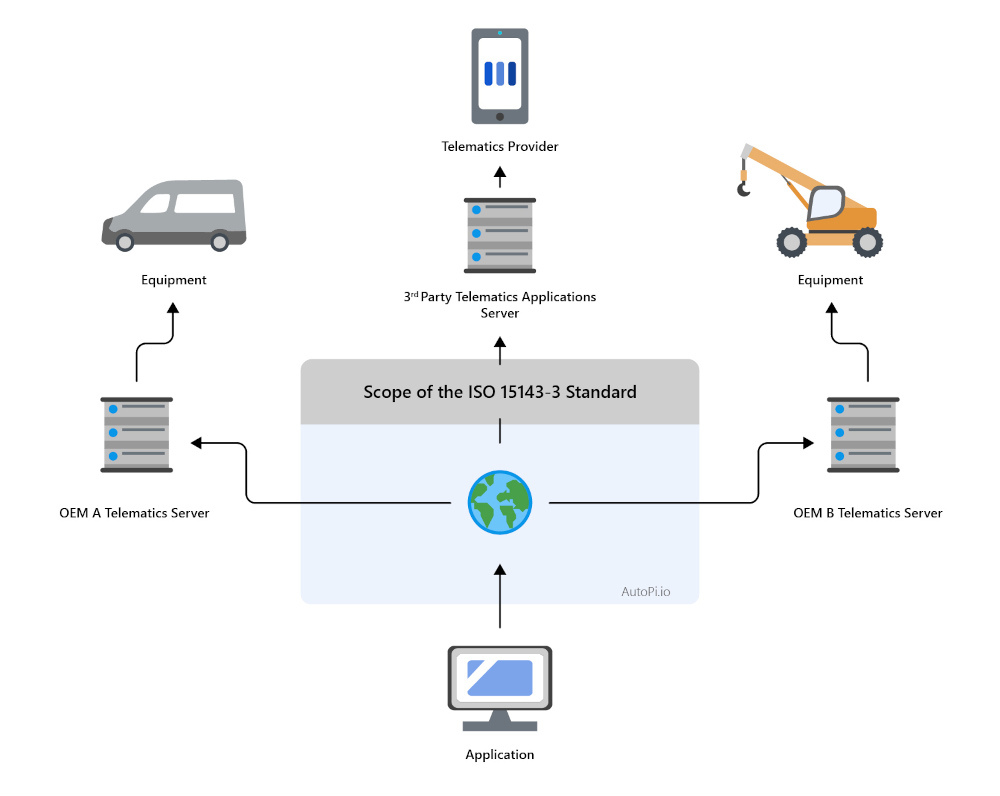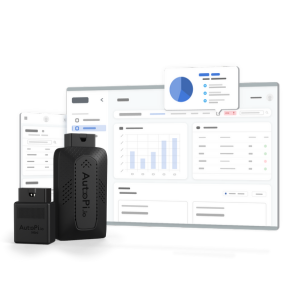The AEMP 2.0 Telematics Standard, introduced by the Association of Equipment Management Professionals in 2012, revolutionized equipment management standardizing telemetry data formats for improved interoperability and efficiency.
The AEMP 2.0 Telematics Standard marks a crucial step in equipment management, emphasizing innovation, data sharing, and transparency. This approach not only streamlines existing practices but also fuels the development of new technologies and potential industries reliant on standardized data.
Evolving over time, the AEMP 2.0 Standard has continually adapted to the dynamic field of telematics, ensuring its relevance and effectiveness in a rapidly advancing technological landscape. Its progressive iterations reflect a commitment to continuous improvement, establishing it as a key benchmark for efficiency and innovation.
What is the AEMP Telematics Standard?
The AEMP Telematics Standard, formally known as ISO 15143-3:2020, represents a significant milestone in the management of earthmoving and mobile road construction machinery. Initially proposed by the Association of Equipment Management Professionals (AEMP) in 2010 as version 1.0, it was later refined and released as version 2.0 in 2016 for commercial use.
This standard focuses on the exchange of worksite data, specifically through telematics - a method of monitoring equipment using GPS and onboard diagnostics. It is a crucial tool for fleet managers operating mixed fleets, as it allows for the integration of OEM telematics data into a unified system. By submitting this standard to the International Organization for Standardization (ISO), AEMP aimed to provide a universally applicable framework beneficial to manufacturers, equipment users, and fleet managers globally.
Key Features of the AEMP Standard:
-
Uniform Data Format: Central feature of the AEMP standard.
-
Broad Support: Compatible with various third-party fleet management systems.
-
Simplified Integration: Eases merging data from multiple monitoring devices.
-
Enhanced Data Acquisition: Improves the process of gathering and applying data.
-
Efficient Tracking: Allows tracking of location, usage, shock, and more.
-
Comprehensive Monitoring: Includes parameters like temperature and motion.
According to Stan Orr, President and CSO of AEMP, this standard not only streamlines data analysis by consolidating it into a single display but also offers significant productivity and cost-effectiveness benefits. This approach empowers managers and contractors to have complete control over their tracking devices and to tailor the data to their specific needs, leading to more informed decision-making in fleet management.

Overview of ISO 15143-3 Standard
The ISO 15143-3 Standard establishes a detailed protocol for exchanging telematics data in construction and road machinery. It specifies the format for transmitting critical operational parameters.
This standard aims to create a universal data communication protocol, ensuring compatibility and interpretability across diverse telematics systems from various manufacturers. It outlines precise specifications for data types, transmission frequencies, and access methodologies.
ISO 15143-3 enhances the functionality of telematics systems by promoting seamless data exchange and interoperability. This technical standardization allows fleet managers to aggregate and assess data efficiently, leading to improved insights into machinery performance and maintenance needs. Ultimately, ISO 15143-3 drives higher operational efficiency and data-driven decision-making in equipment management.
The following table format effectively breaks down the overview of ISO 15143-3 Standard into specific aspects, making it easier to understand and reference.
|
[x] Standard's Purpose
|
[y] Data Types Covered
|
[z] Benefits
|
[a] Global Impact
|
| Establishes a universal language for telematics data in earthmoving and construction machinery. | Operating hours, location, fuel usage, machine health. | Ensures easy interpretation and utilization of data across various manufacturers. | Sets a global benchmark for telematics data exchange. |
| Aims to standardize the communication of equipment data. | Includes guidelines on data transmission methods and access protocols. | Facilitates seamless data aggregation and analysis across mixed equipment fleets. | Enhances interoperability between different telematics systems. |
| Complements the AEMP Telematics Standard. | Focuses on ensuring consistent data interpretation. | Provides accurate and timely information for better decision-making. | Fosters a more connected and efficient approach to equipment management. |
| Ensures easy interpretation and utilization of data across various manufacturers. | Facilitates seamless data aggregation and analysis across mixed equipment fleets. | Provides accurate and timely information for better decision-making. | Improves machinery performance and operational efficiency monitoring. |
| Extends the reach of AEMP Telematics Standard by setting international guidelines. | - | Improves machinery performance and operational efficiency monitoring. | Drives innovation in the field of equipment management. |
Crucial Data Endpoints Defined by ISO 15143-3
Fleets can integrate five primary machine data points into their fleet management systems in a generic format. These key data points are essential for comprehensive fleet monitoring and include:
-
Location: Pinpoints the geographical position of the machinery.
-
Operational Hours: Tracks the total hours the equipment has been in use.
-
Total Fuel Consumed: Measures the aggregate fuel consumption.
-
Fuel Used in the Last 24 Hours: Monitors daily fuel usage.
-
Total Distance Traveled: Calculates the overall distance covered by the machinery.
In addition to these core statistics, ISO 15143-3 also encompasses a range of other data endpoints, vital for detailed fleet analysis:
-
Cumulative Idle Operating Hours: Time spent idling while operational.
-
Fuel Remaining Ratio: Percentage of remaining fuel.
-
Percent of DEF Remaining: Remaining Diesel Exhaust Fluid percentage.
-
Engine Condition: Current status and health of the engine.
-
Digital Input State: Status of digital inputs.
-
Cumulative Power Takeoff Hours: Total hours of power takeoff usage.
-
Average Daily Engine Load Factor: Daily average engine load.
-
Peak Daily Speed: Maximum speed reached in a day.
-
Cumulative Load Count: Total number of loads handled.
-
Cumulative Payload Total: Overall weight of payloads transported.
-
Cumulative Nonproductive Regeneration Hours: Hours spent in nonproductive regeneration.
-
Cumulative Idle Nonoperating Hours: Total idle hours when not in operation.
These comprehensive data endpoints provide an in-depth view of fleet operations, enhancing management efficiency and decision-making.

Why AEMP 2.0 Is Essential for Your Mixed Fleet
In the construction and mining sectors, managing a fleet of heavy equipment efficiently is key to maintaining profitability. Certified equipment managers aim for comprehensive visibility of all machines, including their operational status across various locations. This visibility is critical to enhance utilization, boost efficiency, and prevent costly downtime.
For instance, a large construction project involving multiple sites. With AEMP 2.0, a manager can monitor the status of an excavator at one site and a bulldozer at another in real-time, ensuring optimal deployment and quick response to maintenance needs.
Although most Original Equipment Manufacturers (OEMs) equip their machinery with telematics systems, the data provided varies in detail and format. Compiling this diverse data into a single, actionable view for a mixed fleet presents a significant challenge. Additionally, when managing hundreds of units, the sheer volume of data can be daunting.
The AEMP 2.0 standard offers a solution to this complexity. It enables fleet managers to effectively oversee their entire fleet, regardless of the number of OEMs or types of equipment involved. By standardizing data endpoints, the AEMP 2.0 allows for a unified, comprehensive view of all operational metrics across the organization.
In practical terms, this standardization can lead to significant operational improvements. For example, a company could reduce its reliance on renting or leasing equipment that is less frequently used. It also facilitates better maintenance scheduling, minimizing unexpected downtimes. Moreover, the ability to leverage data-driven strategies becomes more feasible, allowing companies to make informed decisions based on reliable, comprehensive fleet data.





